The 25th Chinese Process Control Conference
Dalian China, 2014
On Active Disturbance Rejection
Systems with Input Time-Delay
for
Qinling Zheng, and Zhiqiang Gao
Cleveland State University
August 2014
�
Outline
Qinling Zheng, Zhiqiang Gao
2
�
Outline
2. The ADRC Solution for Processes
with Delay
3. Frequency Domain Analysis
4. Case Study
5. Conclusion
Qinling Zheng, Zhiqiang Gao
3
�
1. Introduction
Processes with time delay are difficult to control
1) Delay introduces extra phase lag
2) Reduce stability margins (especially phase margin)
3) Put a stringent limit on the control system
bandwidth
Qinling Zheng, Zhiqiang Gao
4
�
1. Introduction
Available means:
1) Smith predictor (SP)
2) Generalized predictive (GP)
Internal model control (IMC)
3)
4) Active disturbance rejection control (ADRC)
Qinling Zheng, Zhiqiang Gao
5
�
Qinling Zheng, Zhiqiang Gao
6
�
1. Introduction
Available means:
1) Smith predictor (SP)
2) Generalized predictive (GP)
Internal model control (IMC)
3)
Limited to stable processes.
Unable to reject unknown disturbances.
4) Active disturbance rejection control (ADRC)
To expand the original SP and to improve its performance,
numerous efforts have been made, such as:
Solutions for integral/unstable processes with time-delay,
Disturbance observer based SP.
Qinling Zheng, Zhiqiang Gao
7
�
1. Introduction
Available means:
1) Smith predictor (SP)
2) Generalized predictive (GP)
Internal model control (IMC)
3)
Similarly to SP, in GP, the predicted plant output is generated and sent to
4) Active disturbance rejection control (ADRC)
the controller.
Unable to control unstable processes with significant dead time.
Cascade control structures with dead-time compensation are needed.
Qinling Zheng, Zhiqiang Gao
8
�

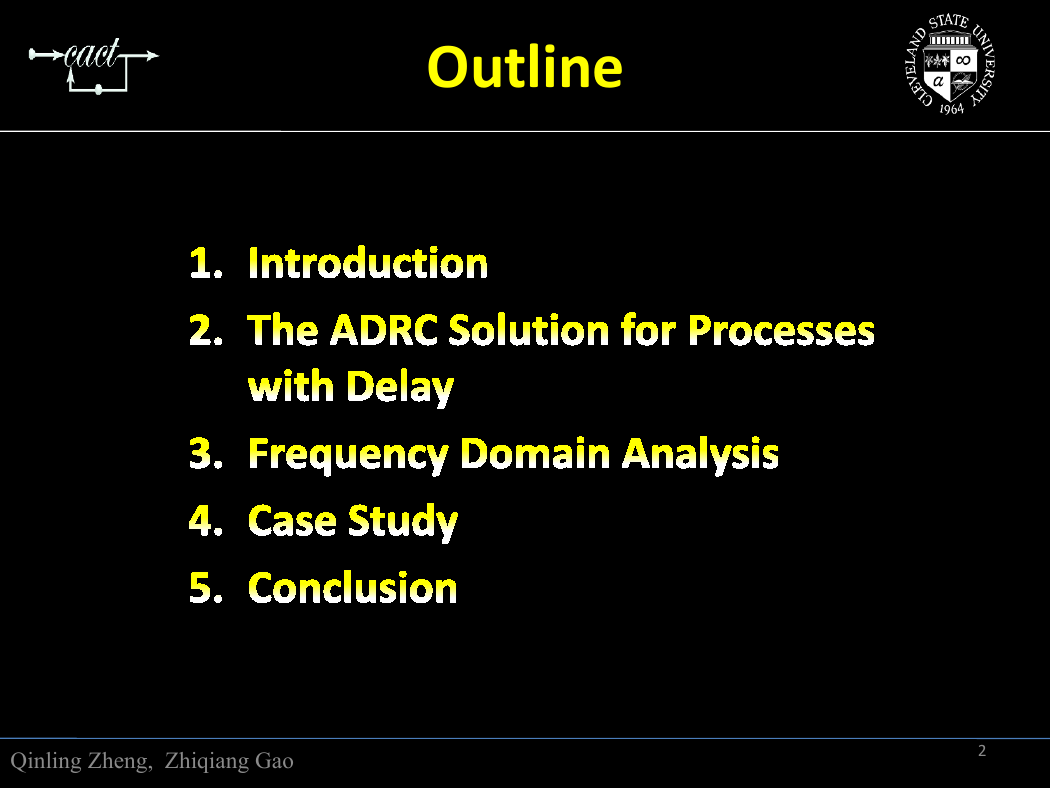
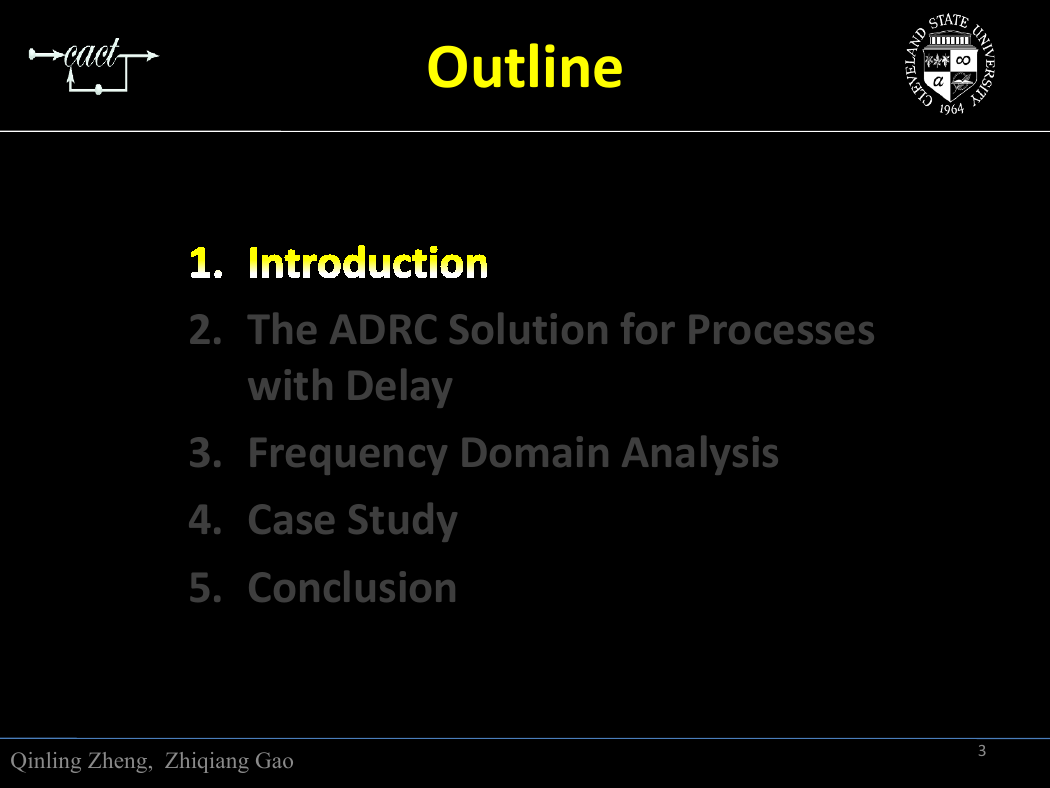
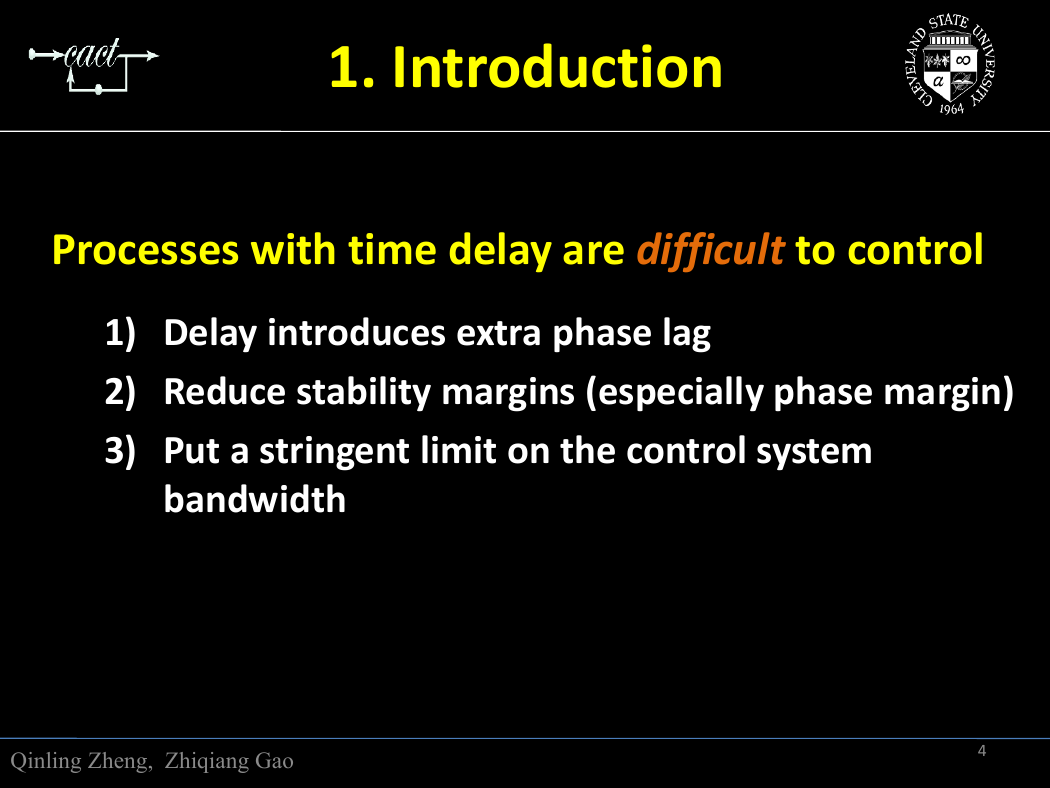
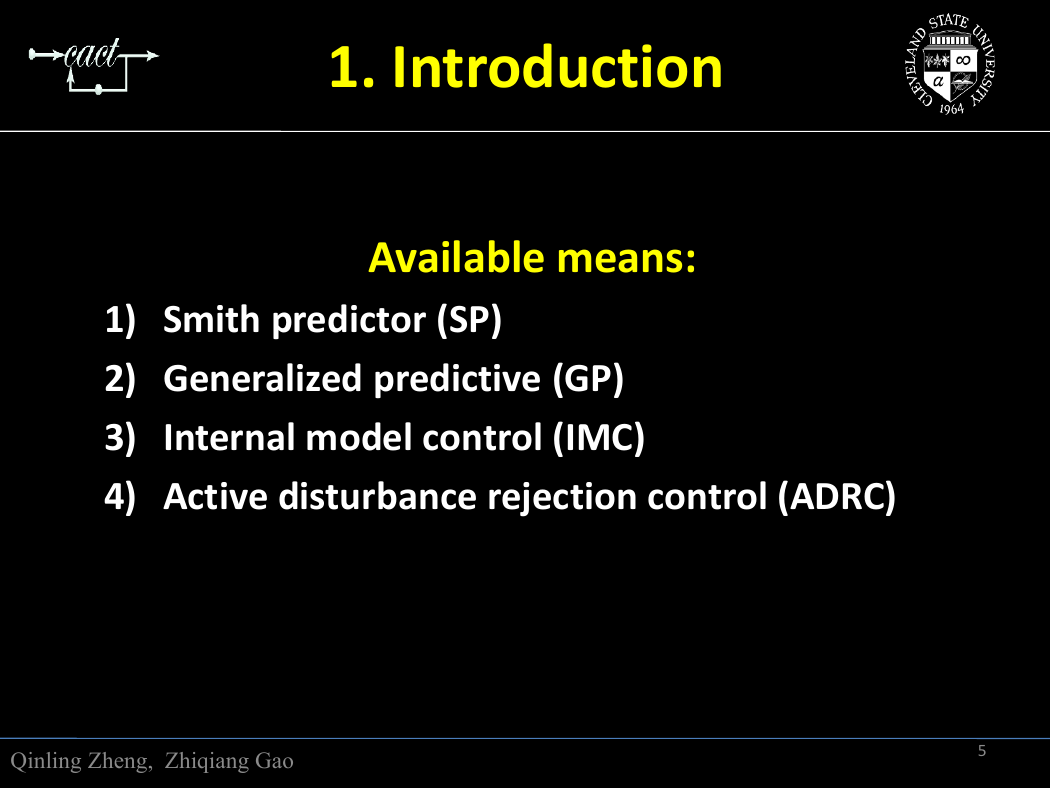

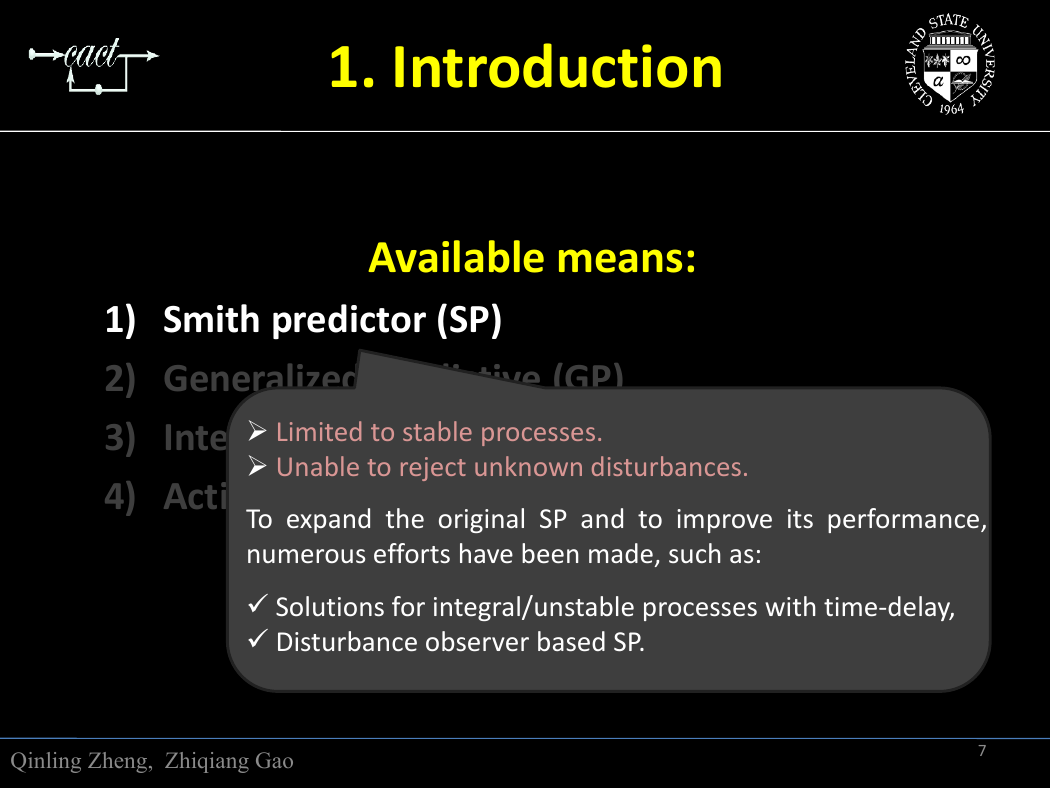









 2023年江西萍乡中考道德与法治真题及答案.doc
2023年江西萍乡中考道德与法治真题及答案.doc 2012年重庆南川中考生物真题及答案.doc
2012年重庆南川中考生物真题及答案.doc 2013年江西师范大学地理学综合及文艺理论基础考研真题.doc
2013年江西师范大学地理学综合及文艺理论基础考研真题.doc 2020年四川甘孜小升初语文真题及答案I卷.doc
2020年四川甘孜小升初语文真题及答案I卷.doc 2020年注册岩土工程师专业基础考试真题及答案.doc
2020年注册岩土工程师专业基础考试真题及答案.doc 2023-2024学年福建省厦门市九年级上学期数学月考试题及答案.doc
2023-2024学年福建省厦门市九年级上学期数学月考试题及答案.doc 2021-2022学年辽宁省沈阳市大东区九年级上学期语文期末试题及答案.doc
2021-2022学年辽宁省沈阳市大东区九年级上学期语文期末试题及答案.doc 2022-2023学年北京东城区初三第一学期物理期末试卷及答案.doc
2022-2023学年北京东城区初三第一学期物理期末试卷及答案.doc 2018上半年江西教师资格初中地理学科知识与教学能力真题及答案.doc
2018上半年江西教师资格初中地理学科知识与教学能力真题及答案.doc 2012年河北国家公务员申论考试真题及答案-省级.doc
2012年河北国家公务员申论考试真题及答案-省级.doc 2020-2021学年江苏省扬州市江都区邵樊片九年级上学期数学第一次质量检测试题及答案.doc
2020-2021学年江苏省扬州市江都区邵樊片九年级上学期数学第一次质量检测试题及答案.doc 2022下半年黑龙江教师资格证中学综合素质真题及答案.doc
2022下半年黑龙江教师资格证中学综合素质真题及答案.doc